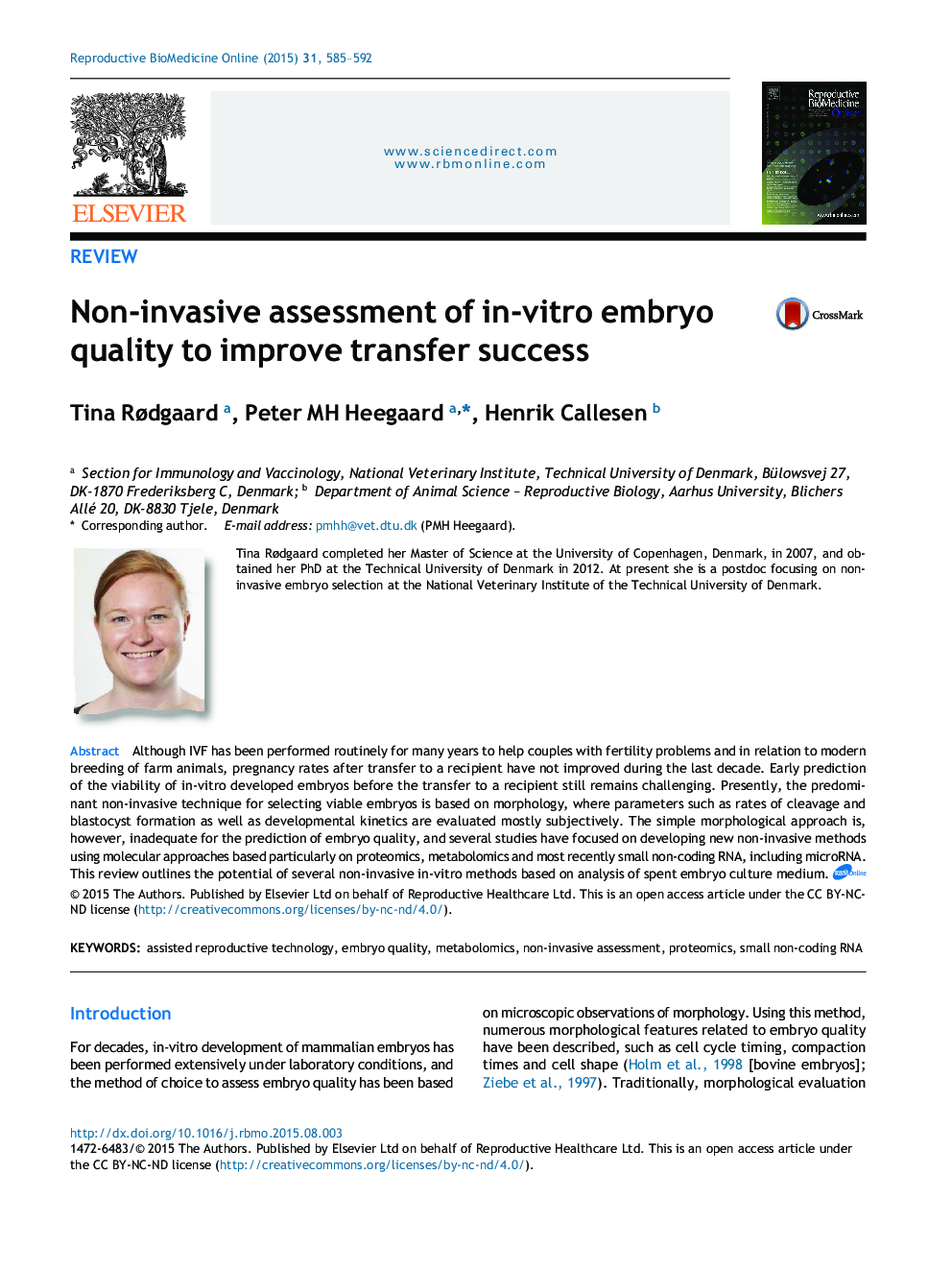| Article ID | Journal | Published Year | Pages | File Type |
|---|---|---|---|---|
| 6188671 | Reproductive BioMedicine Online | 2015 | 8 Pages |
Although IVF has been performed routinely for many years to help couples with fertility problems and in relation to modern breeding of farm animals, pregnancy rates after transfer to a recipient have not improved during the last decade. Early prediction of the viability of in-vitro developed embryos before the transfer to a recipient still remains challenging. Presently, the predominant non-invasive technique for selecting viable embryos is based on morphology, where parameters such as rates of cleavage and blastocyst formation as well as developmental kinetics are evaluated mostly subjectively. The simple morphological approach is, however, inadequate for the prediction of embryo quality, and several studies have focused on developing new non-invasive methods using molecular approaches based particularly on proteomics, metabolomics and most recently small non-coding RNA, including microRNA. This review outlines the potential of several non-invasive in-vitro methods based on analysis of spent embryo culture medium.
